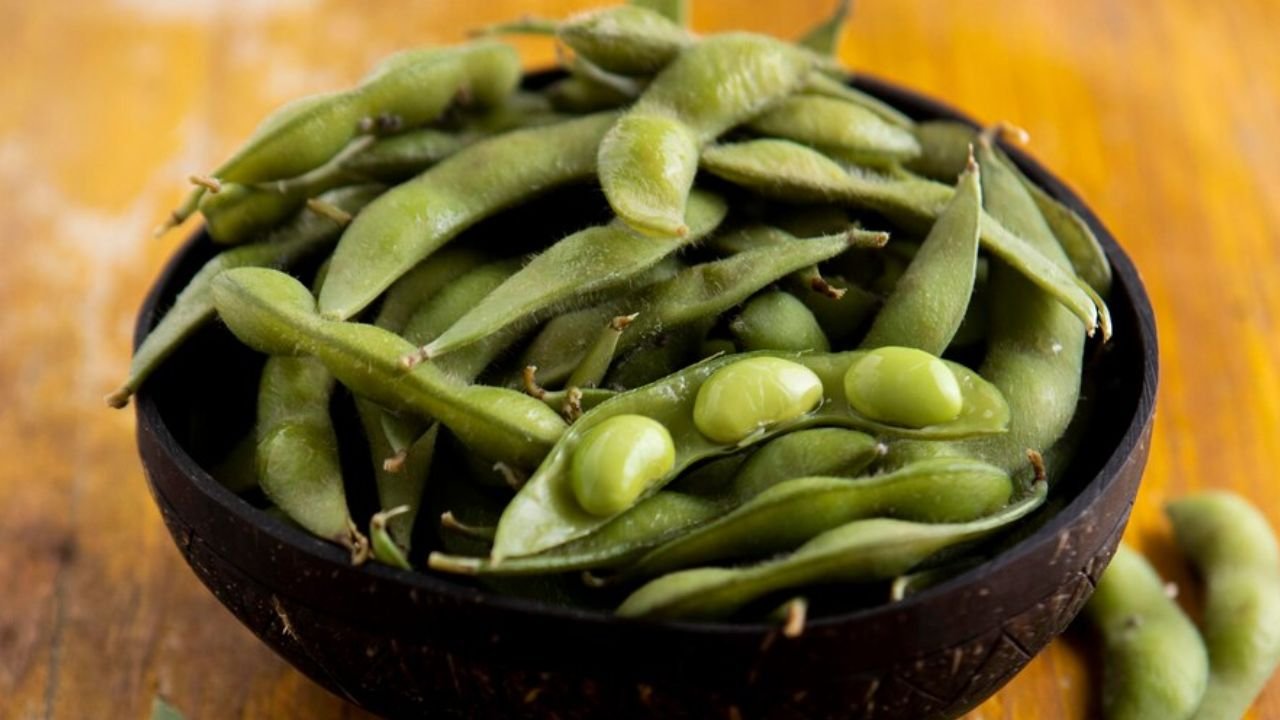Edamame, or young soybeans, is a nutritious legume that can be easily grown at home. Edamay, pronounced as “eh-dah-MAH-may”, refers to young, green soybeans (Glycine max) harvested before they are fully mature. It is a popular and nutritious legume, commonly eaten as a snack or side dish, especially in Asian cuisine. Here’s a step-by-step guide that will help you successfully grow fresh edamame!

Scientific Name of Edamame: Glycine max (L) Merr
Steps to Grow Edamame
Step 1: Choose the right variety
- Use seeds to grow edamame (Glycine max). Do not use regular soybeans.
- Some popular varieties of edamame are Midori Giant, Envy, Butterbean, Karikachi which you can easily grow at home.
Step 2: Choose the right place
- Choosing the right place to grow edamame is very important. For this, keep the following things in mind:
- Sunlight: It requires 6-8 hours of direct sunlight daily so keep it in a place where it gets enough sunlight.
- Soil: Use well-drained, fertile soil with a pH between 6.0-7.0.
- Spacing: If you are growing it in rows, keep a distance of 12-18 inches between each plant. This helps the plants grow well.
Step 3: Sowing Edamame Seeds
When to Sow:
- The best time is from spring to early summer when the soil is above 15°C (60°F).
- Plant it after frost, as edamame thrives best in warm conditions.
How to Sow:
- Sow the seeds directly into the soil at a depth of 1 inch.
Spread the seeds 3-4 inches apart in rows 18 inches apart. - After planting the seeds, water them lightly to avoid washing them away.
Step 4: Watering and Care
Watering:
- Keep the soil evenly moist, especially during flowering and pod formation. Avoid overwatering to prevent root rot.
Weeding and Mulching:
- Keep the area around the plant weed-free.
- Use mulch (such as straw or grass clippings) to retain moisture in the plant and prevent weeds.
Step 5: Fertilize
- Edamame is a legume, so it gets its own nitrogen from the air.
- Add compost or organic fertilizer to the plant before planting. Avoid fertilizers with high nitrogen content as they promote leaves but reduce pod production.
Step 6: Support the Plants (Optional)
- Edamame plants grow 1-3 feet tall. So if they look weak, support them with small sticks or trellises to keep them upright.
Step 7: Pest and Disease Control
Common Pests:
- Spray neem oil to repel pests like aphids, spider mites, caterpillars from the plant or use ladybugs to control them naturally.
- Use row covers and cover the plants to protect them from pests.
Diseases:
- Overwatering the plant can cause diseases like powdery mildew and root rot in the plant. Ensure good air circulation in the plant and avoid getting the leaves wet.
Step 8: Harvest Edamame
When to Harvest:
- Edamas are ready 75-90 days after planting. Harvest when the pods are plump and bright green (before they turn yellow).
- Harvest when the seeds are soft (not fully ripe like dry soybeans).
How to Harvest:
- To harvest the pods from the plant, simply cut the pods off or pull up the entire plant and scoop out the pods.
- Edamas can be eaten boiled or steamed; they taste best this way!
Step 9: Saving Seeds for Next Planting
- To save seeds for regrowing plants, leave some pods on the plant to dry completely.
- Then harvest the dried pods, remove the seeds, and store them in a cool, dry place to grow next season.